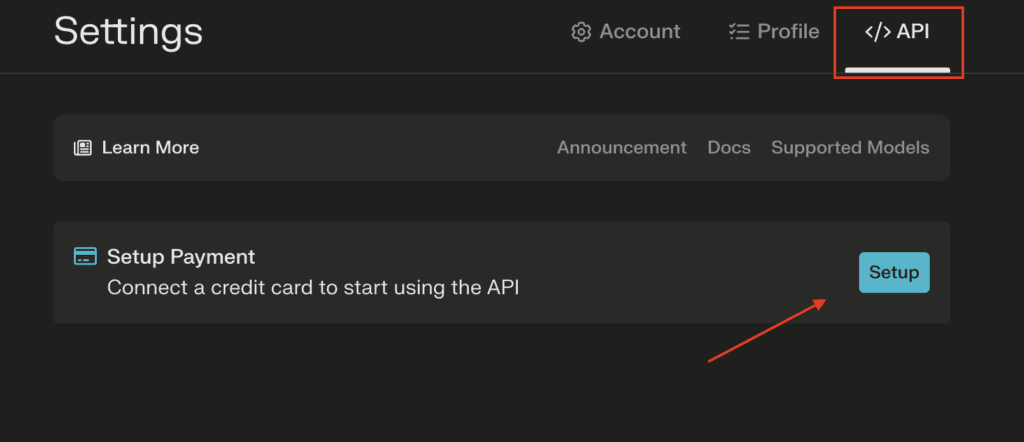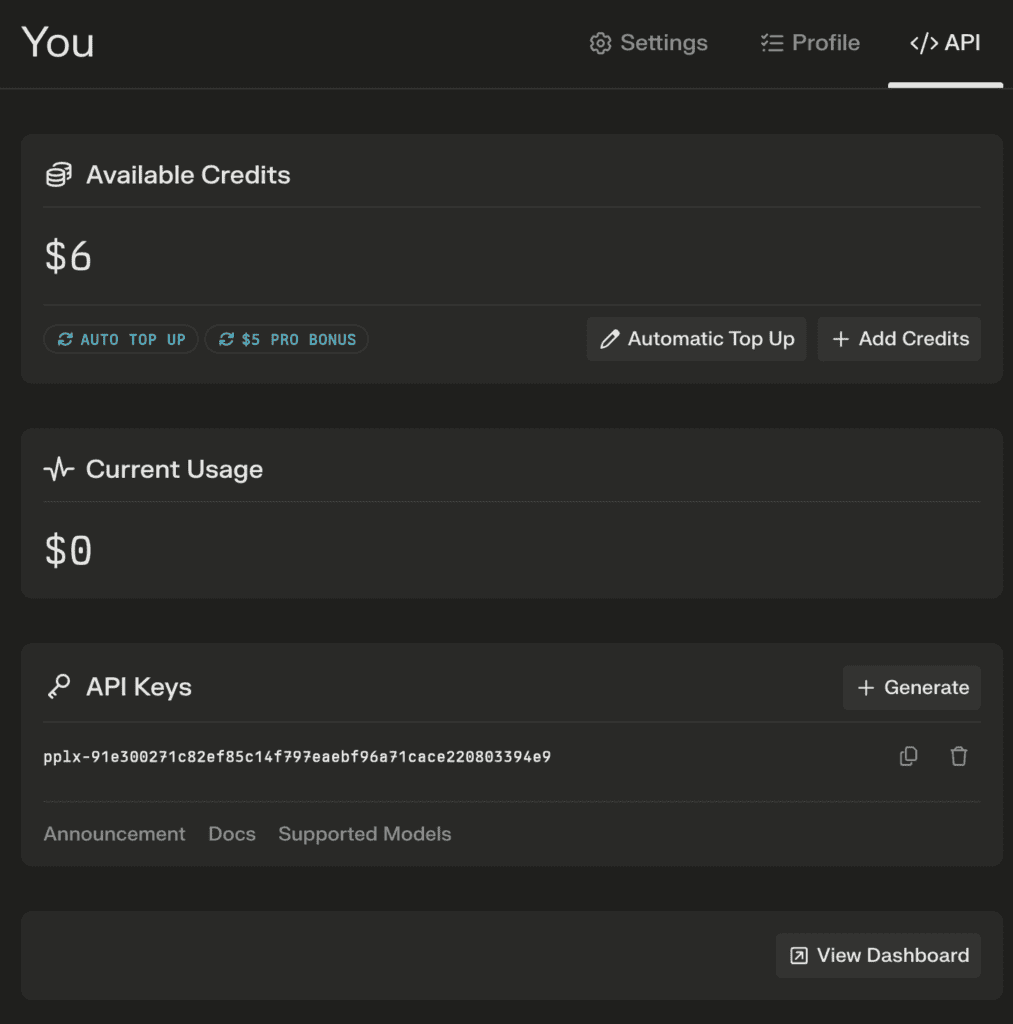The AI market is evolving rapidly, with new tools emerging every day. While many of these tools are simply variations of others, a few, like Perplexity AI, stand out with their unique features.
In this article, we will delve into “What is Perplexity AI” and how it sets itself apart from its significant competitor, OpenAI’s ChatGPT. Let’s find out!
1 What is Perplexity AI?

Perplexity AI is a new AI chat tool that functions as a highly effective search engine. It employs advanced artificial intelligence technologies, including OpenAI’s latest GPT models, to provide direct answers to questions posed by users.
What makes Perplexity AI stand out is its ability to not only answer questions but also display the source of the information it provides, making it a reliable tool for information gathering
Moreover, this AI-chat-based conversational search engine can swiftly find information on a broad range of topics. By utilizing Natural Language Processing (NLP) and machine learning, Perplexity AI can offer precise and accurate responses to questions, making it a valuable resource for those seeking quick and reliable information.
2 How Does Perplexity AI Works?

Perplexity AI operates by combining its own indexing and ranking mechanisms with the advanced capabilities of OpenAI’s API. Here’s how it works:
- Initial Search: When you ask a question, Perplexity AI begins by performing a search. It sifts through a search index to find relevant web pages, focusing on top pages and featured snippets related to your query.
- Integration with OpenAI’s API: This is where the power of OpenAI’s advanced language models comes into play. Perplexity AI uses these models, provided through OpenAI’s API, to analyze and interpret the search results. This step is essential for understanding the nuances of your question.
- Balanced Approach: Perplexity AI aims to strike the right balance between comprehensive and relevant answers. It ensures that the responses are detailed yet pertinent to your query.
- Trustworthy Responses: A unique feature of Perplexity AI is its ability to cite sources for the information it provides. This transparency builds trust and ensures the reliability of the answers.
- Contextual Understanding: Using predictive text capabilities and considering the entire conversation history, Perplexity AI generates useful and contextually accurate responses. It selects the best answer from a range of sources and presents a concise summary.
- Efficient Information Gathering: Unlike traditional search engines where you sift through links, Perplexity AI allows you to ask direct questions and receive clear, accurate answers backed by curated sources.
In essence, Perplexity AI functions as an AI-powered search tool, efficiently indexing and ranking internet content while leveraging the advanced language processing capabilities of OpenAI’s models. This combination ensures that the answers provided are not only accurate but also highly relevant and reliable.
3 Main Features of Perplexity AI
Perplexity AI distinguishes itself in the AI-driven search engine landscape with a suite of features designed to enhance user experience and information accuracy. Here are its key features:
- Chatbot-Style Search Engine: Utilizes AI to gather and provide responses from multiple web sources based on natural language queries.
- Content Generation: Aids in creating insightful content by leveraging natural language processing and machine learning.
- Accurate Information: Uses large language models trained on extensive datasets to provide precise answers.
- Mobile App: Offers voice search and multilingual support, available for iOS and Android devices.
- Perplexity AI Chrome Extension: Enhances browsing by summarizing web pages and enabling direct queries from the toolbar.
- Problem-Solving Abilities: Assists with various tasks including research, writing, and investment analysis.
- AI-Based Search Engine: Employs natural language processing and machine learning for query analysis.
- Contextual Search: Delivers accurate results for complex or ambiguous queries by understanding context.
- Natural Language Generation: Capable of creating human-like text for summaries, reports, or articles.
- User-Friendly Interface: Provides an intuitive interface for easy query input and quick response retrieval.
And let’s not forget about its versatile search capabilities, which are as follow:

- Web Search: Perplexity AI scours the entire web, delivering answers from a diverse range of websites for general inquiries.
- Academic Research: It accesses academic papers, providing scholarly information for in-depth research.
- Writing Assistance: Perplexity AI can generate text without searching the web, aiding in writing tasks.
- Discovering YouTube Videos: It can find and recommend relevant YouTube videos based on user queries.
- Reddit Discussions: It also can search Reddit to bring up discussions and opinions, giving insights into public sentiment.
- Wolfram Alpha Integration: For queries needing computational answers or data analysis, Perplexity AI taps into Wolfram Alpha’s capabilities.
Perplexity AI’s multifaceted approach makes it a highly versatile and reliable tool for a wide range of information needs, from casual web searches to academic research and content creation.
4 Applications of Perplexity AI
Finding Topics on Forums
Perplexity AI can be an invaluable tool for delving into forum discussions, especially when these forums don’t appear in standard Google searches. By using its advanced search capabilities, Perplexity AI can unearth niche topics and diverse perspectives hidden in forum threads. This is particularly useful when seeking alternative viewpoints or deep dives into specific subjects that mainstream search engines might overlook.

Fact-Checking
Perplexity AI also plays a crucial role in fact-checking. By providing sources along with its responses, it enables users to verify the accuracy of the information.
This feature is especially important in a landscape where misinformation can be prevalent. It helps ensure the credibility of content, whether it’s for academic research, journalism, or professional writing.
Outline/Article Generation
For content creators and writers, Perplexity AI aids in outline and article generation. By analyzing competitive content, it helps identify key themes and topics, allowing for the creation of more comprehensive and competitive articles.
For instance, when writing about time management, Perplexity AI can analyze existing content on the subject, helping identify popular strategies and overlooked aspects, thereby enriching the article’s depth and appeal.

5 Comparison of Perplexity AI vs ChatGPT
Areas of Similarity
Both Perplexity AI and ChatGPT are AI platforms that offer advanced data analysis and natural language processing capabilities. They share similarities in their fundamental technology, leveraging machine learning and AI to process and understand human language.
- Advanced Data Analysis and NLP: Both platforms utilize natural language processing for analyzing and responding to text data, making them suitable for tasks that require understanding and generating human-like language.
- AI-Powered Platforms: Each uses AI to deliver unique services, whether it’s ChatGPT’s focus on conversational AI or Perplexity AI’s emphasis on data analysis and predictive analytics.
- Pricing Model: Both ChatGPT and Perplexity AI feature free and paid options, with their premium plans similarly priced around $20 per month. This pricing structure reflects their effort to balance accessibility with advanced features.
Areas of Difference
While both platforms share a core foundation in AI and NLP, they differ significantly in their applications, functionalities, and value propositions.
- Core Functionality: ChatGPT is primarily a chatbot platform geared towards automating customer support and lead generation, while Perplexity AI provides a more extensive range of capabilities including advanced data analysis, natural language processing, and predictive analytics.
- Web Access Capability: Each platform has its unique way of accessing web content. ChatGPT integrates with the Bing search engine, while Perplexity AI offers web information retrieval through its Copilot feature, enabling both to provide users with extensive and updated web-based information.
- Research and NLP Applications: Perplexity AI is noted for its effectiveness in research, sentiment analysis, entity recognition, and text classification, making it suitable for detailed analysis and source-based information retrieval. ChatGPT, conversely, is adept at generating text responses and summarizing research.
- Speed and Training: ChatGPT’s pre-training gives it an edge in speed and integration ease, whereas Perplexity AI requires real-time learning from business-specific data, which can be slower.
- Query Handling: Perplexity can manage longer search queries with better accuracy in understanding complex queries. ChatGPT sometimes struggles with repetitive keywords or redundant questions.
- Value Proposition: ChatGPT’s value lies in automating and personalizing customer interactions, enhancing customer support and satisfaction. Perplexity AI, however, is focused on extracting insights from complex data and generating accurate predictions, aiding in informed decision-making and strategic planning.
6 Is there a Perplexity API?
Yes, there is a Perplexity API, which is referred to as the “pplx-api.” It is a REST API that allows users to access Perplexity’s language model (LLM) for various natural language processing tasks. Perplexity Pro users get $5 of free credit every month.
This credit can be applied to any of the services offered, making your initial usage effectively cost-free. The API provides documentation, examples, and support for custom Perplexity LLMs and embeddings.
To get your own API key for the pplx-api, you need to follow these steps:

- Visit the Perplexity Account Settings page
- Generate an API key, which is a long-lived access token that can be used until it is manually refreshed or deleted.
- Send the API key as a header in your HTTPS requests to authenticate and access the pplx-api

7 Supported Models
| Model | Context Length | Model Type |
|---|---|---|
| codellama-34b-instruct | 16384 | Chat Completion |
| llama-2-70b-chat | 4096 | Chat Completion |
| mistral-7b-instruct [2] | 4096 [1] | Chat Completion |
| mixtral-8x7b-instruct | 4096 [1] | Chat Completion |
| pplx-7b-chat | 8192 | Chat Completion |
| pplx-70b-chat | 4096 | Chat Completion |
| pplx-7b-online | 4096 | Chat Completion |
| pplx-70b-online | 4096 | Chat Completion |
8 Perplexity (Pplx-API) Pricing :
Pplx-API adopts a usage-based pricing model that’s both flexible and economical, ensuring you only pay for what you use. This approach is particularly beneficial for developers and businesses seeking scalable solutions.
Pricing for Vanilla Language Models
The core of The pricing structure revolves around input and output tokens. This system is directly tied to the size of the model you choose. Below is a clear breakdown of the costs associated with different model sizes:
Cost per Million Tokens
| Model Parameter Count | $/1M Input Tokens | $/1M Output Tokens |
|---|---|---|
| 7B | $0.07 | $0.28 |
| 34B | $0.35 | $1.40 |
| 70B | $0.70 | $2.80 |
Special Pricing for Online Models
In an interesting move, the company has introduced special pricing for their -online models, catering to different usage needs. What’s notable here is that input tokens are completely free of charge.
This is a significant shift from the norm and could be a game changer for many users. The company instead applies a clear-cut fee of $5 per thousand requests. Of course, this is in addition to the standard charge for output tokens.
This pricing strategy seems to be a strategic move to accommodate a wider range of users, especially those who frequently deal with large-scale requests.
| Online Model Parameter Count | $/1000 Requests | $/1M Output Tokens |
|---|---|---|
| 7B | $5 | $0.28 |
| 70B | $5 | $2.80 |
9 Perplexity API Rate Limits
| Model | Request Rate Limit | Token Rate Limit |
|---|---|---|
| mistral-7b-instruct | – 10/5 seconds – 50/minute – 500/hour |
– 8000/10 seconds – 80000/minute – 256000/10 minutes |
| mixtral-8x7b-instruct | – 4/5 seconds – 12/minute – 120/hour |
– 8000/minute – 32000/10 minutes |
| codellama-34b-instruct | – 10/5 seconds – 30/minute – 300/hour |
– 20000/minute – 80000/10 minutes |
| llama-2-70b-chat | – 4/5 seconds – 12/minute – 120/hour |
– 8000/minute – 32000/10 minutes |
| pplx-7b-chat | – 4/5 seconds – 12/minute – 120/hour |
– 8000/minute – 32000/10 minutes |
| pplx-70b-chat | – 4/5 seconds – 12/minute – 120/hour |
– 8000/minute – 32000/10 minutes |
| pplx-7b-online | – 10/minute | N/A |
| pplx-70b-online | – 10/minute | N/A |
10 Limitations and Challenges of Perplexity AI
Perplexity like any other tool out there has several limitations and challenges. Here are the main ones of them:
- Limited Features Compared to ChatGPT: Perplexity AI, while effective, doesn’t offer as extensive a range of features as ChatGPT. Users looking for more advanced functionalities might find Perplexity AI somewhat lacking in comparison.
- Factual Errors and Potential Bias: Users should be aware that Perplexity AI, like other AI tools, can sometimes provide incorrect information or exhibit biases in its responses. This necessitates a degree of skepticism and independent verification.
- Need for Fact-Checking: Despite Perplexity AI’s ability to cite sources for its answers, users are still advised to conduct their own fact-checks. The tool can occasionally use outdated sources or provide generalized answers, making it essential for users to validate the information themselves.
In simple terms, Perplexity, like many AI tools that use language, is good in some areas but still has things to improve, especially when dealing with new topics, creative writing, or understanding the full meaning of things.
11 Conclusion
As we wrap up our exploration of Perplexity AI, it’s clear that this concept is more than just technical jargon; it’s a pivotal part of AI’s evolving language understanding. Its impact on tools like ChatGPT showcases the exciting potential of AI in our daily communication.
Do you have experiences or questions about how Perplexity AI is shaping our interactions with AI? We’d love to hear your thoughts! Feel free to drop a comment below.








Discussion about this post